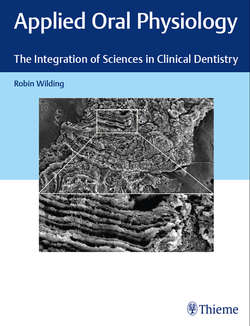Читать книгу Applied Oral Physiology - Robin Wilding - Страница 17
На сайте Литреса книга снята с продажи.
2.2.1 Physical Properties
ОглавлениеDentin consists of mainly a collagenous matrix, mineralized to a moderate degree with a variety of apatite salts and magnesium and carbonates. By weight, it consists of 72% mineral, 18% organic matrix, and 10% water. It is less brittle than enamel (the modulus is about one-tenth of enamel), but is softer (about one-fifth of the hardness) and so wears more rapidly (see Appendix B.1 Physical Properties of Enamel and Dentin). The physical properties of dentin contribute to two important mechanical functions of the tooth. The first is to provide resilience to fracture. This resilience is due to the presence of proteoglycans. These molecules are resilient and prevent the propagation of cracks. Resilience is also provided by the collagen fibers which are orientated at right angles to a crack which may form in adjacent enamel (see Appendix B.3 Composites and Resistance to Fracture). The second important mechanical property of dentin is to provide a composite tooth surface for efficient mastication. Under the influence of a course diet the dentin wears faster than the enamel, leading to the formation of a concave grinding surface surrounded by a sharp cutting edge (see Chapter 1 The Origins of Teeth).
